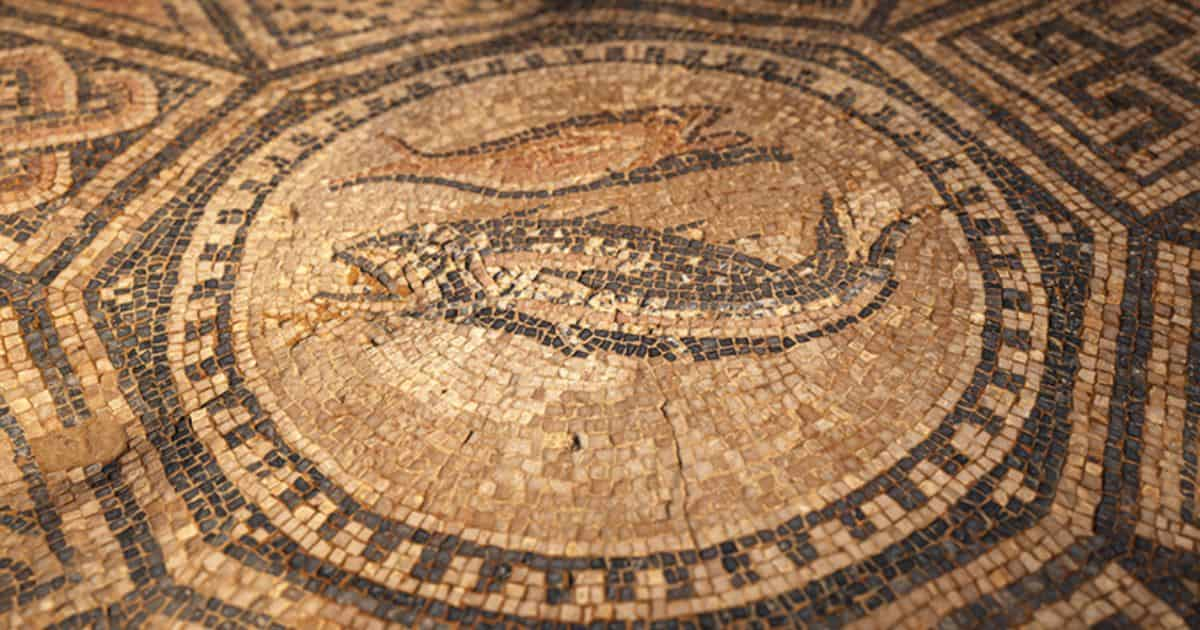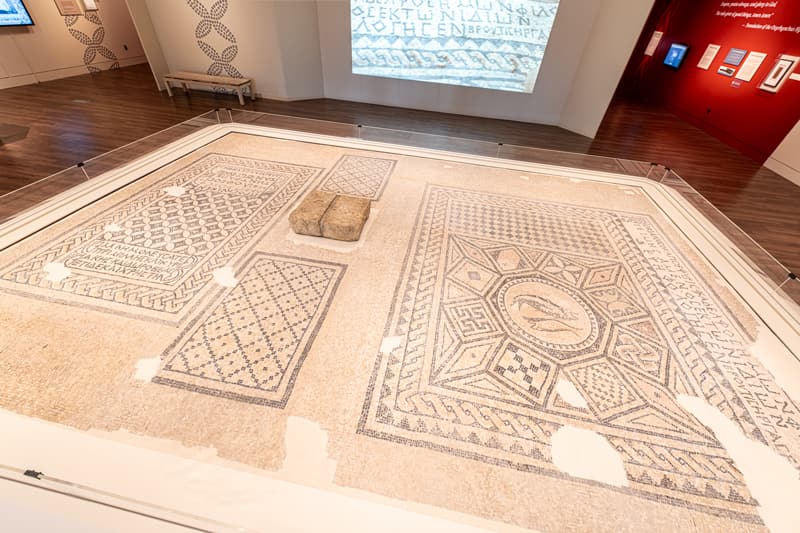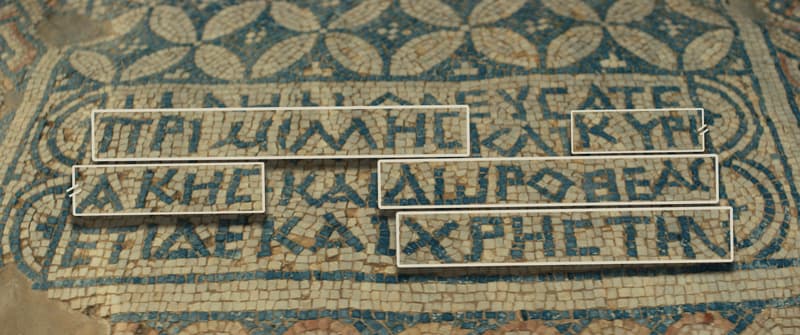An inmate at Israel’s Megiddo prison uncovered what archaeologists are calling “the greatest discovery since the Dead Sea Scrolls” – a 1,800-year-old mosaic containing the world’s earliest known inscription declaring Jesus is God.

Archaeological discoveries often bring us joy as we witness the truths written in the Bible centuries ago unveiling before our eyes. The Megiddo Mosaic offers us a precious glimpse into the early Christian church and shows how our spiritual ancestors boldly proclaimed Jesus as God, even in times of persecution.
The massive 581-square-foot mosaic, dating back to 230 AD, was discovered in 2005 beneath the prison floor in the Jezreel Valley – the prophesied location of the final battle of Armageddon. This ancient masterpiece decorated what archaeologists have identified as the world’s first Christian prayer hall.

The Greek inscription on the mosaic reads, “The god-loving Akeptous has offered the table to God Jesus Christ as a memorial.” This inscription serves as powerful evidence that the early church firmly believed in the divinity of Christ from its beginning.
The Israel Antiquities Authority (IAA) spent four years carefully excavating this precious artifact. During their work, they uncovered evidence of peaceful coexistence between Romans and Christians during a time of widespread persecution.
A Roman officer named Gaianus had commissioned the artwork, as shown by the inscription: “Gaianus, a Roman officer, having sought honor, from his own money, has made the mosaic.” The discovery of a nearby Roman camp further supported this unexpected harmony between the two groups.
The mosaic revealed fascinating details about early Christian life, particularly highlighting the important role of women in the church. Besides Akeptous, who donated the table, the inscription mentions four other women: “Remember Primilla and Cyriaca and Dorothea, and lastly, Chreste.”

Among its artistic elements, the mosaic includes some of the earliest known Christian fish symbols. Experts believe these images reference Jesus’ miracle of feeding 5,000 people with two fish, as recorded in Luke 9:16.
Since its discovery in 2005, the mosaic remained hidden under the prison floor until recently. Now, this extraordinary piece of Christian history has found a temporary home at the Museum of the Bible in Washington, D.C., where it will be displayed until July 2025.
Museum CEO Carlos Campo expressed his awe: “We truly are among the first people to ever see this, to experience what almost 2,000 years ago was put together by a man named Brutius, the incredible craftsman who laid the flooring here.”
The IAA carefully preserved and transported the mosaic in 11 crates, some weighing up to a thousand pounds. Bobby Duke, director of the Scholars Initiative at the Museum of the Bible, emphasized its significance: “This is arguably one of the most important archaeological discoveries for understanding the early Christian church.”
After its American exhibition titled ‘The Megiddo Mosaic: Foundations of Faith’ concludes, the mosaic will return to Israel for permanent display at its discovery site.
This remarkable discovery strengthens our understanding of the early Christian church and their bold faith in Christ. It challenges us to stand firm in our own faith today and continue proclaiming the divinity of Christ with the same conviction.




